Discover the intricate beauty of various crochet lace types as we unravel their unique patterns and techniques in this engaging blog post.
Crochet lace is a beautiful and intricate art form that has been around for centuries. It’s amazing to think that something as simple as a hook and some yarn can create such delicate and stunning designs.
There are many different types of crochet lace, each with its own unique characteristics and techniques. Whether you’re a seasoned crocheter or just starting out, exploring the world of crochet lace is sure to inspire your creativity and leave you in awe of the possibilities.
So, let’s dive into the world of crochet lace together!
Broomstick Lace
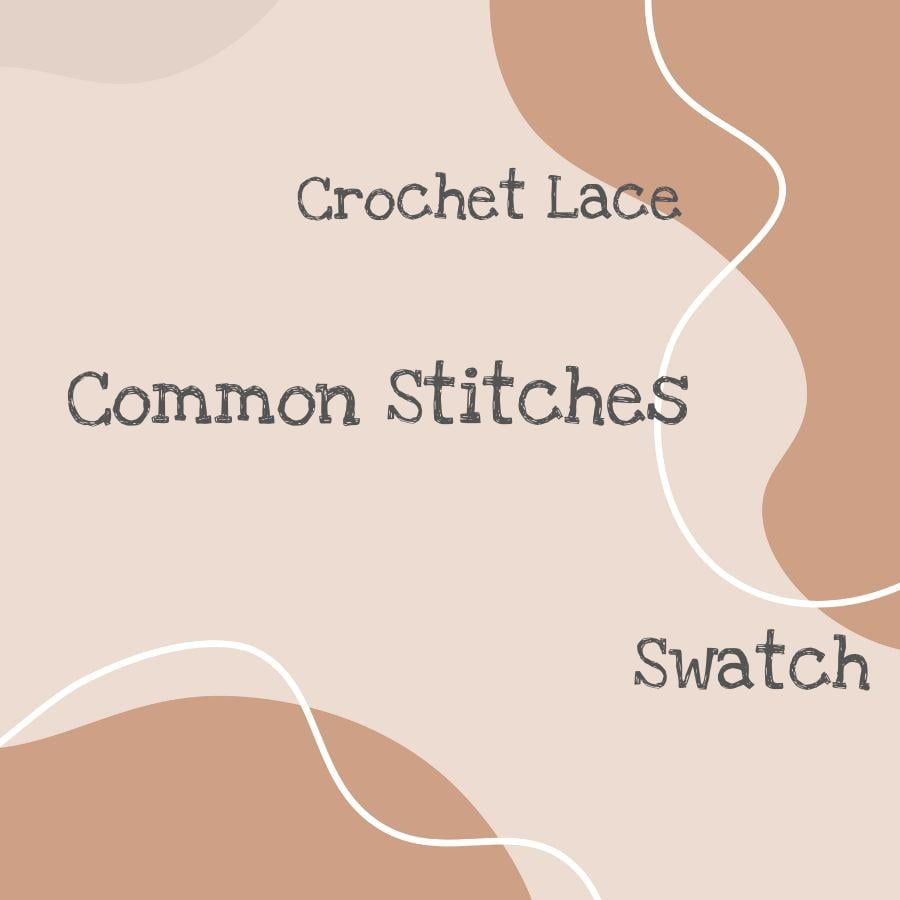
Broomstick Lace is a unique crochet lace technique that creates a beautiful and delicate pattern. It gets its name from the tool used to create it, which is typically an actual broomstick or dowel rod.
The process involves creating loops of yarn around the stick and then working them off in groups to form intricate patterns.
One of the great things about Broomstick Lace is that it’s relatively easy to learn, even for beginners. Once you get the hang of wrapping your yarn around the stick and pulling up loops, you can experiment with different stitch combinations to create stunning designs.
Some popular projects using Broomstick Lace include scarves, shawls, blankets, and even clothing items like tops or skirts. With so many possibilities for customization through color choice and stitch variation – not to mention how lightweight yet warm this type of lace can be – there’s no limit on what you can make with this technique!
Bruges Lace
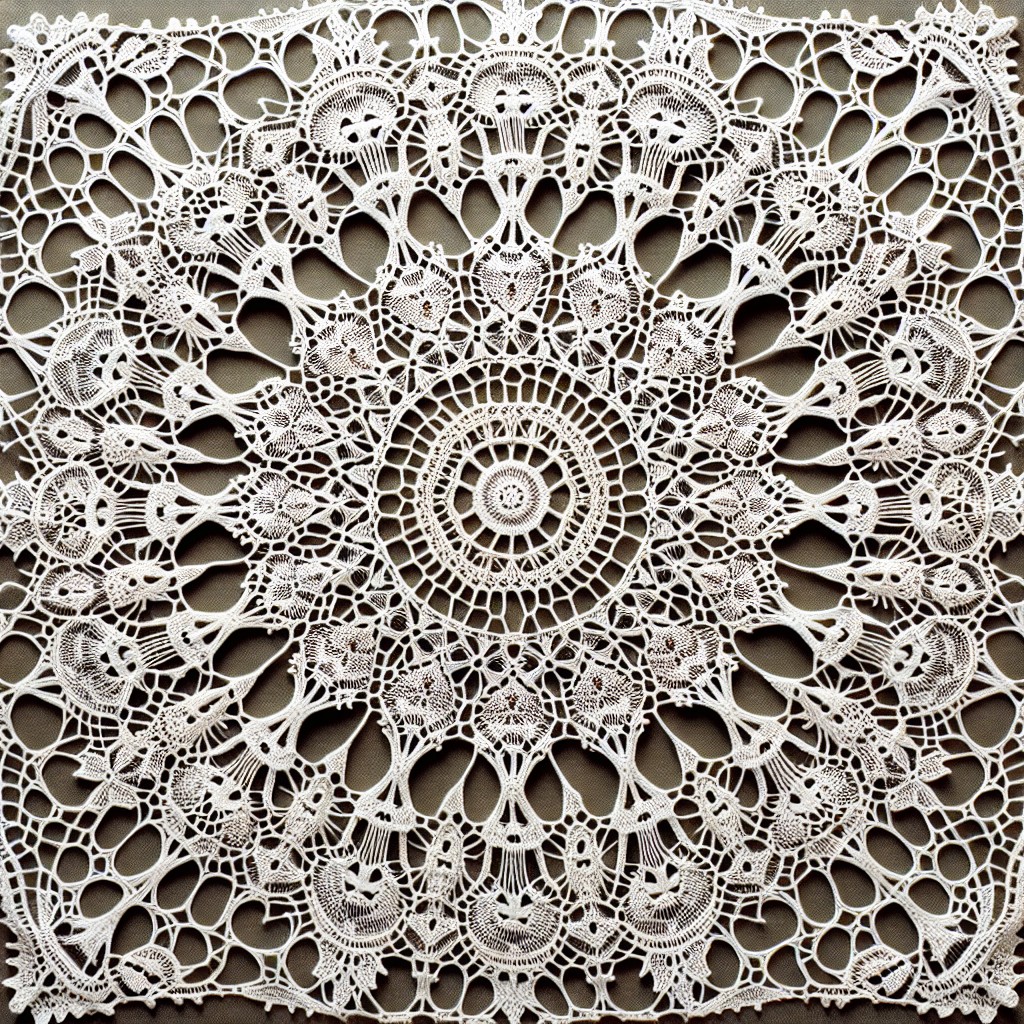
It’s known for its intricate and delicate designs that often feature floral motifs and scalloped edges. This style of lace is created using a combination of basic crochet stitches such as single crochets, double crochets, chains, and slip stitches.
One unique aspect of Bruges Lace is the use of “gimps,” which are thin threads or cords used to create raised lines within the design. These gimps can be made from metallic thread or even fishing line to add extra dimensionality to your project.
To get started with Bruges Lace, it’s important to have some experience with basic crochet techniques before attempting this more advanced style. However, there are many resources available online including tutorials and patterns for beginners looking to try their hand at this beautiful craft.
Filet Crochet
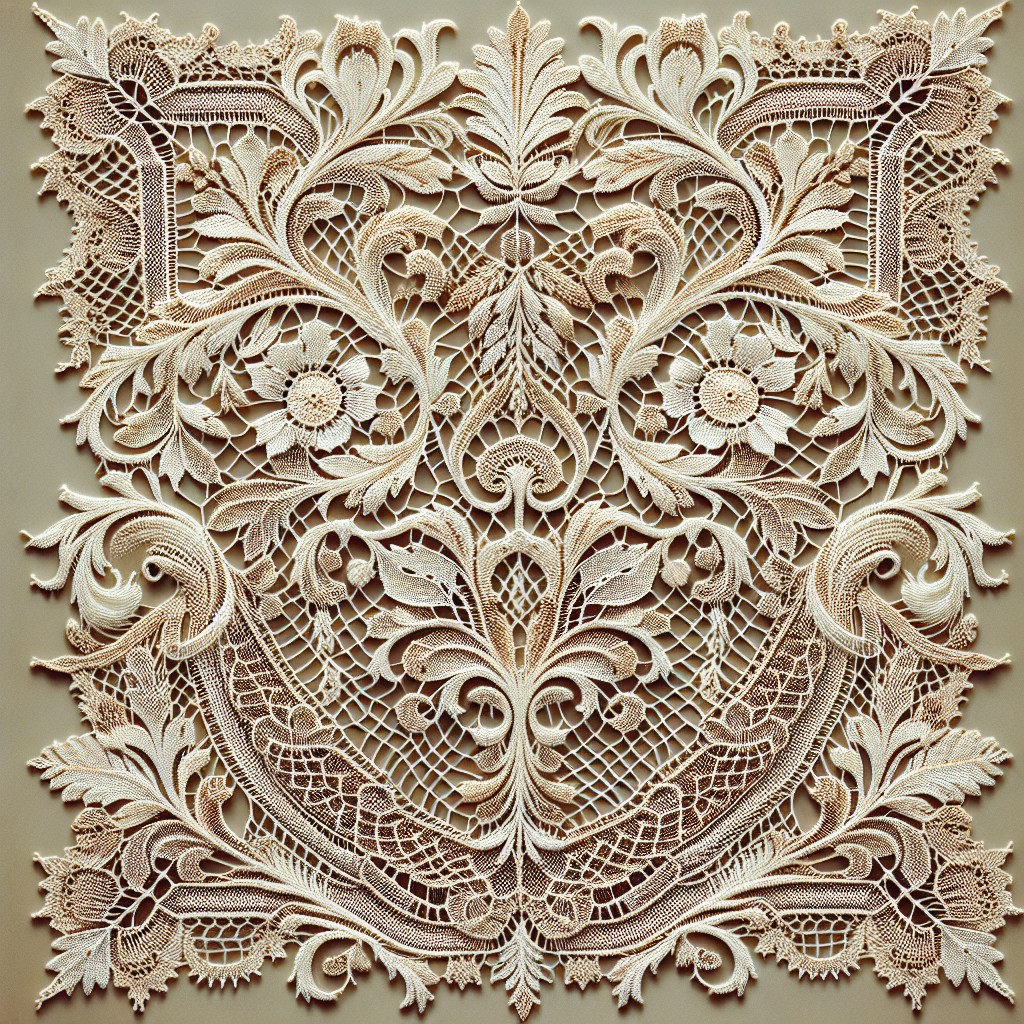
It’s named after the French word for “net” because it resembles fishing nets. Filet crochet is often used to make delicate doilies, table runners, and curtains.
To create filet crochet, you’ll need to start with a grid pattern made up of squares and spaces. The squares represent stitches while the spaces represent open areas in the design.
You can use any stitch you like for filet crochet as long as it fits within the square on your grid.
One popular technique in filet crochet is creating images or words using blocks of solid stitches against an open mesh background created by chains or double crochets worked into specific spaces on each row.
Hairpin Lace
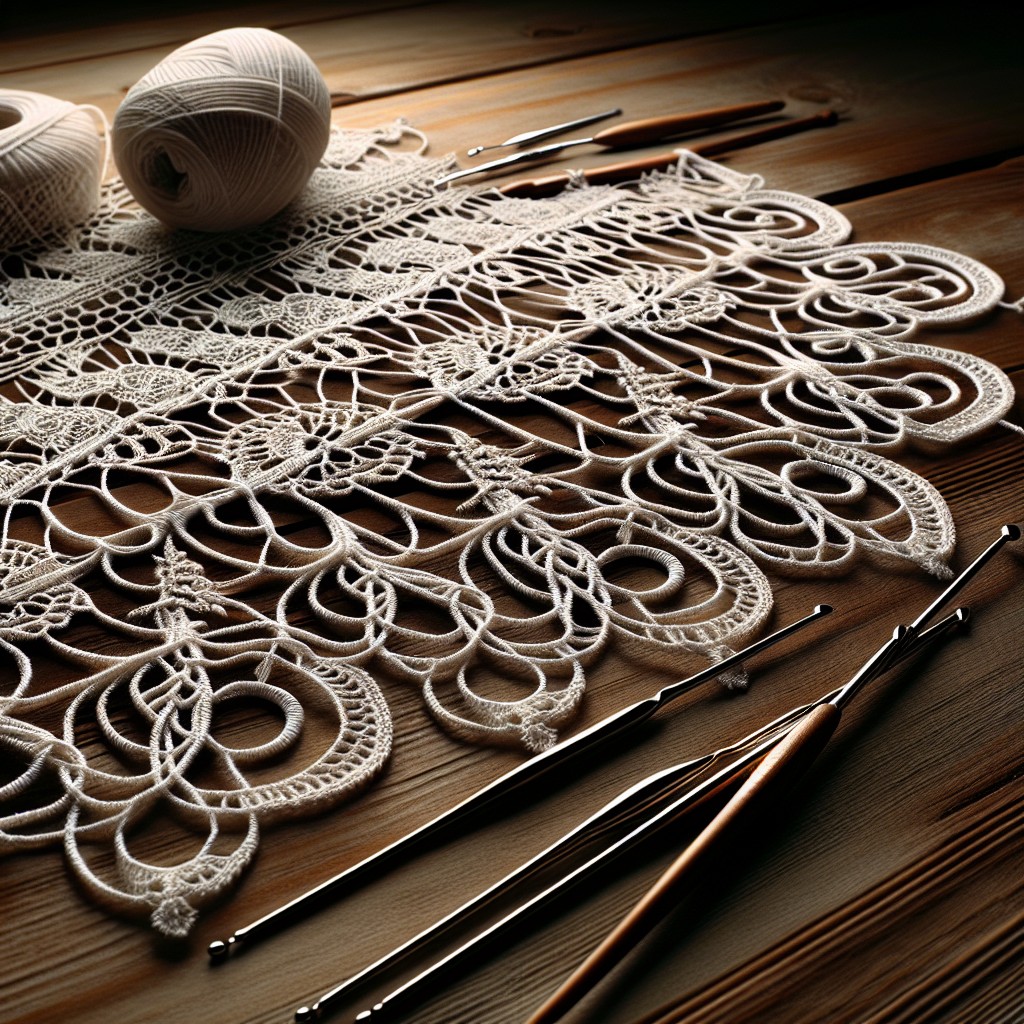
These strips are then joined together to form intricate and delicate designs. The technique was popular in the Victorian era, but it has recently experienced a resurgence in popularity among modern crocheters.
To create hairpin lace, you will need a special tool called a hairpin loom or fork. This tool consists of two parallel metal rods connected by two smaller bars at each end, forming an elongated U-shape.
The process involves creating loops on either side of the loom using your crochet hook and yarn before joining them together with slip stitches or other techniques. Once you have created enough strips, they can be arranged into various patterns such as shawls, scarves or even blankets.
One advantage of this technique is that it allows for easy customization since you can adjust the width and length according to your preferences by adding more loops on either side before joining them together.
Irish Crochet Lace
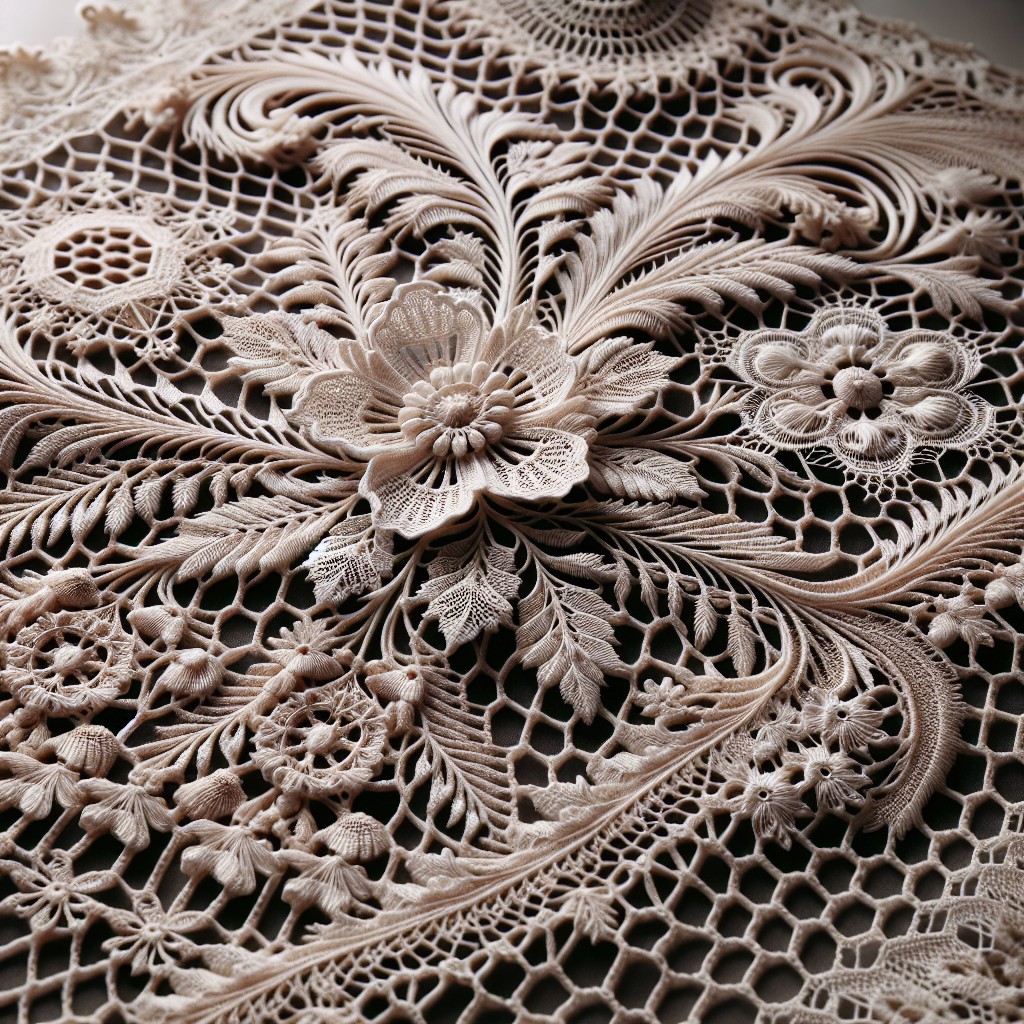
It was created as a way for women to earn money by making beautiful and intricate lace pieces that were sold to wealthy patrons. Irish Crochet Lace is known for its delicate, lacy appearance and intricate designs.
One of the defining features of Irish Crochet Lace is the use of motifs, which are small crocheted shapes that are joined together to create larger pieces. These motifs can be anything from flowers and leaves to butterflies or even animals.
Another unique aspect of Irish Crochet Lace is its use of padding cords, which give certain parts more dimensionality than others. This technique allows for raised areas on the finished piece, giving it an almost three-dimensional quality.
If you’re interested in trying your hand at this beautiful craft, there are many resources available online with patterns and tutorials on how to get started with Irish Crochet Lace.
Pineapple Stitch Lace
This type of crochet lace is perfect for creating delicate shawls, doilies, table runners, and other decorative items.
To create Pineapple Stitch Lace, you’ll need to be familiar with basic crochet stitches such as chains (ch), single crochets (sc), double crochets (dc), treble crochets (tr) and shells. The pineapple stitch itself consists of multiple shells worked together in a specific sequence to create the distinctive shape.
While Pineapple Stitch Lace may seem daunting at first glance due to its complexity, it’s actually quite easy once you get the hang of it. With practice and patience anyone can master this beautiful technique!
Tunisian Crochet Lace
It’s also known as Afghan stitch or Tricot Crochet, and it creates a dense fabric with a distinctive texture that resembles woven fabric. Tunisian Crochet Lace can be used to create stunning shawls, scarves, blankets, and even garments.
To get started with Tunisian Crochet Lace, you’ll need to use an elongated hook called an Afghan hook or Tunisian hook. This type of hook has a long shaft similar to knitting needles but with a crochet-style head at one end.
The basic stitches in Tunisian Crochet are simple yet versatile: the foundation row (also known as the chain), tunisian simple stitch (tss), tunisain knit stitch (tks) , tunisan purl stich(tps). Once you have mastered these stitches you can start creating more complex patterns like shells or fans by combining them in different ways.
One thing that makes this technique stand out from other types of lace is its ability to create intricate designs using only one color yarn due to its unique texture created by alternating between front loops only(FLO)and back loops only(BLO).
Crochet Lace for Beginners
One easy stitch to try is the offset V-stitch, which creates a lacy texture without being too complicated. Another great option for beginners is filet crochet, which uses a combination of open and filled squares to create intricate designs.
When it comes to choosing yarn for your first crochet lace project, opt for something lightweight and soft like cotton or bamboo. These fibers will give your finished piece a delicate drape while still being easy to work with.
As with any new skill, practice makes perfect when it comes to crocheting lace. Start by swatching different stitches until you find one that feels comfortable and looks beautiful in your chosen yarn.
From there, experiment with different patterns and techniques until you find what works best for you.
Swatch #1: Basic Shells
This simple yet elegant stitch creates a beautiful shell pattern that can be used in many different projects. To create this stitch, all you need is some yarn and a crochet hook.
To begin, make a chain of any length (depending on how wide you want your project to be). Then work one double crochet into the fourth chain from your hook.
Chain two and skip two chains before working another double crochet into the next chain.
Repeat this pattern across the row until you reach the end of your foundation chain. For subsequent rows, simply work three double crochets into each space between shells from previous rows.
The Basic Shells stitch is perfect for creating lightweight scarves or shawls with an airy feel that drapes beautifully around your shoulders or neck. It’s also versatile enough for use in blankets or other home decor items where its delicate texture adds visual interest without overwhelming other design elements.
Swatch #2: V Shells
This stitch creates a lovely pattern of shells that resemble Vs, hence its name. The V shell is made up of double crochets and chains, making it an ideal choice for beginners who want to try their hand at creating intricate designs.
To create the V shell stitch, start by chaining multiples of six plus three stitches. Then work one double crochet into the fourth chain from your hook before skipping two chains and working five double crochets into the next chain.
Skip two more chains before working one single crochet in each of the next two stitches.
Next comes forming your first “V” shape: skip over three stitches (the last 2 dc’s from previous row + ch-1 sp), then work 5 dc’s in next st (which should be sc). To complete this “V”, skip over another 3 sts (the ch-1 sp + first 2dc’s) before finishing with a single crochet in each remaining chain across until there are only four left.
Swatch #3: Twisted Stitches
This stitch is created by working into the back loop of the stitch instead of the front, which twists the stitch and creates a raised ridge on one side.
To create this swatch, you’ll need to know how to work single crochet (sc) stitches. Begin by chaining 15 stitches, then work one sc in each chain across.
Turn your work and chain one.
For row two, begin with a twisted sc in the first stitch (insert hook into back loop only), then continue with regular sc stitches across until you reach the last stitch. End with another twisted sc in that last stich (again insert hook into back loop only).
Repeat row two for as many rows as desired.
The result will be an interesting textured fabric that can be used for anything from scarves or shawls to decorative edgings on blankets or clothing items.
Swatch 4: Pineapple Lace
It’s perfect for adding texture and elegance to any project, from shawls to table runners. Swatch 4: Pineapple Lace is an excellent way to practice this technique before diving into larger projects.
To create this swatch, you’ll need basic knowledge of double crochet stitches (dc), chain stitches (ch), slip stitch (sl st) and treble crochet stitches (tr). The pattern consists of multiple rounds that build upon each other, creating the unique pineapple shape.
Once you’ve mastered the basics of pineapples lace with Swatch 4, you can incorporate it into your own designs or try out some free patterns available online.
What Is Crochet Lace?
It’s often used for delicate items such as doilies, tablecloths, and shawls. Crochet lace can be made using a variety of stitches including chains, single crochets, double crochets, treble crochets and more.
What sets crochet lace apart from other types of crochet is the use of open spaces in the design. These spaces are created by skipping stitches or chaining extra stitches between groups of stitches.
The result is an airy fabric with beautiful designs that allow light to filter through.
Crochet lace has been around for centuries but has evolved over time with new techniques being developed all the time. Today there are many different types of crochet laces each with its own unique characteristics and techniques.
Common Stitches Used in Crochet Lace
Some common stitches used in crochet lace include the chain stitch, single crochet, double crochet, treble (triple) crochet, picot stitch and shell stitch. These basic stitches can be combined in different ways to create unique patterns and textures.
The chain stitch is one of the most basic stitches used in crocheting. It’s often used as a foundation for other more complex patterns or as an edging for finished pieces.
Single Crochet (sc) creates tight fabric with little drape which makes it perfect for creating solid motifs like flowers or leaves.
Double Crochet (dc) creates taller rows than single crochets making it ideal for lacy openwork designs such as filet mesh or pineapple motifs.
Treble Crochet (trc), also known as triple crochet produces even taller rows than double crochets making it great when you want your design to have height without too much width.
Picot Stitch adds texture by creating small loops along the edge of your work while Shell Stitch combines multiple sets of 2-5 dc into one space giving you a scalloped effect that works well on borders and edges.
Supplies Needed to Crochet Lace
First and foremost, you’ll need yarn. When it comes to choosing the right yarn for your project, consider the weight of the yarn and its fiber content.
Laceweight or fingering weight yarns are typically used for crochet lace projects because they produce delicate results that highlight intricate stitch patterns.
Next up is your trusty crochet hook! The size of your hook will depend on the thickness of your chosen yarn and how tight or loose you want your stitches to be. A smaller hook will produce tighter stitches while a larger one will result in looser ones.
Don’t forget about a good quality tapestry needle (also known as a “yarn needle”). This tool is essential for weaving in ends neatly at the end of each row or when changing colors.
Yarn
It comes in a variety of colors, textures, and weights that can be used to create different effects in your projects. When choosing yarn for crochet lace, it’s important to consider the weight and texture of the yarn as well as its color.
For beginners, it’s best to start with a light-colored worsted weight or sport-weight cotton yarn because they are easy to work with and show off stitch patterns well. As you become more experienced with crocheting lace, you may want to experiment with finer threads such as size 10 or 20 cotton thread or even silk thread for delicate laces.
When working on larger projects like shawls or blankets that require multiple skeins of yarns from the same dye lot (to ensure consistency), make sure you purchase enough at once so that all skeins come from the same batch.
Crochet Hook
Crochet hooks come in a variety of sizes, from tiny steel hooks used for thread work to larger ergonomic hooks designed for comfort during extended use.
When working with lace patterns, the size of your hook can make a big difference in the final product. A smaller hook will create tighter stitches and more intricate details while a larger one will produce looser stitches that are perfect for openwork designs.
It’s important to choose the right type of crochet hook as well. Some crocheters prefer traditional aluminum or plastic hooks while others swear by bamboo or wooden ones that offer better grip and control over their work.
Yarn Needle (Tapestry Needle)
It’s used to weave in the loose ends of your project and sew pieces together. Yarn needles come in different sizes and shapes, but they all have large eyes that can accommodate thick yarns.
When working with crochet lace patterns that require intricate details or multiple colors of thread or yarns, you’ll need to use a tapestry needle to weave in the ends neatly. This will help ensure that your finished product looks polished and professional.
To use a tapestry needle correctly:.
- Thread the end of your yarn through the eye of the needle.
- Weave it through several stitches on either side.
- Cut off any excess thread close to where you’ve woven it into place.
Using this technique will keep your work looking neat while preventing any unraveling over time.
Easy Crochet Lace Stitches to Swatch
That’s why starting with some easy stitches is a great way to build your confidence and get comfortable with the techniques involved. Here are two simple stitches that are perfect for swatching:
1. Offset V-Stitch: This stitch creates a beautiful lacy texture that’s perfect for scarves or shawls.
2. Twisted Stitches: These add an interesting twist (pun intended!) on traditional crochet stitches, creating a unique look in your lace projects.
Offset V-Stitch
This stitch creates a unique texture that resembles the scales of a fish or the petals of a flower. It’s perfect for adding depth and dimension to your crochet lace projects.
To create an Offset V-Stitch, you’ll need to know how to double crochet (dc) and chain (ch). Here’s how it works:
- Start by chaining an even number of stitches.
- Skip the first two chains, then work one dc into each chain across.
- Chain 3, turn your work.
- Work one dc into the second stitch from your hook.
- *Skip two stitches, then work three dc into the next stitch.*
- Repeat step 5 until you reach the last three stitches in your row
- Skip two stitches
- Work one double crochet on top of turning ch
Repeat steps 3-8 until you’ve reached your desired length.
Common Questions About Crocheted Lace
Here are some common questions about crocheted lace that you may have:.
1. What is the difference between crochet lace and regular crochet? Crochet lace uses thinner yarns and smaller hooks than regular crochet to create delicate designs.
2. Can I use any type of yarn for crocheting lace? While you can technically use any type of yarn for crocheting lace, it’s best to stick with lightweight or fine weight cotton or silk blends as they provide the best drape.
3. How do I read a pattern for crocheted Lace? Reading patterns takes practice but once you get used to it, it becomes easier over time! Start by reading through the entire pattern before beginning so that you understand what each abbreviation means.
4. What are some easy stitches to start with when learning how to make Crochet Lace? Some easy stitches include basic shells stitch which creates an elegant scalloped edge; V-stitch which adds texture; twisted stitch which gives your work dimensionality; pineapple stitch creates intricate lacy motifs perfect in shawls or table runners.
5.What kind of projects should I start making if I’m new at Crochet Lace? Start small by practicing swatches using different types of stitches until comfortable enough then move on bigger projects like scarves/shawls/ponchos/lace borders etc.
Free Crochet Lace Patterns
From shawls and wraps to doilies and table runners, the possibilities are endless. One great resource is Ravelry.com, a community-driven website that offers thousands of free crochet patterns from designers all over the world.
Another popular source for free crochet lace patterns is Pinterest. A quick search will yield hundreds of results ranging from beginner-friendly projects to more advanced designs.
When choosing a pattern, it’s important to consider your skill level as well as the materials required. Some patterns may call for specific types or weights of yarn or require specialized hooks or other tools.
Easy Crochet Shawl
Not only are they simple and quick to make, but they also showcase the beauty of crochet lace in a practical way. The Maple Forest Wrap is one such example that features delicate pineapples and airy stitches that create a stunning effect.
To make this shawl, you’ll need some lightweight yarn (such as fingering or sport weight) and an appropriate hook size for your chosen yarn. The pattern uses basic stitches like chains, single crochets, double crochets and treble crochets so it’s perfect for beginners who want to practice their skills.
The Maple Forest Wrap starts with just two chain stitches before building up into rows of shells separated by mesh spaces. Once completed it can be worn draped over the shoulders or wrapped around the neck like a scarf – making it versatile enough for any occasion!
Maple Forest Wrap
This wrap features an intricate leaf pattern that is perfect for autumn, but can be worn year-round. The pattern uses a combination of basic stitches like single crochet and double crochet, as well as more advanced techniques like post stitches to create texture and depth.
One great thing about the Maple Forest Wrap is that it’s customizable to your preferred size – you can make it larger or smaller depending on your preference. It’s also made with lightweight yarn which makes it comfortable to wear even in warmer weather.
If you’re new to crocheting lace patterns, don’t worry! The Maple Forest Wrap comes with detailed instructions so you can follow along easily. Plus, once you’ve mastered this beautiful design, there are plenty more free crochet lace patterns available online for you to try out!
Lace Borders and Edgings
Lace borders and edgings are perfect for adding a delicate touch to blankets, shawls, scarves, and even clothing items like cardigans or dresses. They can be simple or intricate depending on the look you’re going for.
To create a lace border or edging, you’ll need to choose the right pattern that complements your project’s design. Some popular options include shell stitch borders with picots (small loops), scalloped edges with openwork spaces in between each scallop, and lacy fan-shaped motifs.
Once you’ve chosen your pattern of choice, it’s time to start crocheting! You’ll typically work along one edge of your project at a time using either single crochet stitches (for straight edges) or slip stitches (for curved edges). It may take some practice before getting comfortable working along an edge without distorting its shape.
Adding lace borders and edgings is an excellent way of elevating any crochet piece into something special.
Materials
The most important material is, of course, your yarn. For crochet lace projects, it’s best to choose a lightweight and delicate yarn that will create an airy and lacy effect.
Cotton thread or bamboo yarn are great options for this type of project.
In addition to your choice of yarn, you’ll also need a crochet hook in an appropriate size for your chosen pattern. Lace patterns often require smaller hooks than other types of crochet projects because they involve intricate stitches and fine details.
Lastly, don’t forget about the importance of having a good quality tapestry needle on hand for weaving in ends or adding finishing touches like edging or borders.
Tools
The most important tool is, of course, the crochet hook. Crochet hooks come in many different sizes and materials such as aluminum or bamboo.
Choosing the right size hook for your project is crucial to achieving the desired gauge and tension.
Another important tool for crocheting lace is a yarn needle (also known as a tapestry needle). This type of needle has a large eye that can accommodate thicker yarns used in lace projects and allows you to weave in ends seamlessly.
In addition to these basic tools, there are other supplies that can make crocheting easier such as stitch markers which help keep track of pattern repeats or row counters which help with keeping count when working on larger projects.
Instructions
First and foremost, make sure you have all the necessary supplies on hand: yarn in your desired color(s), a crochet hook appropriate for your yarn weight (check the label for recommendations), and a tapestry needle for weaving in ends.
Next, familiarize yourself with any special stitches or techniques required by your chosen pattern. Many types of crochet lace involve intricate stitch work or unusual techniques like hairpin loops or broomstick handles.
Take some time to practice these stitches before diving into your project so that you feel confident as you go.
Remember that patience is key when working with delicate laces! It can be tempting to rush through projects in order to see them completed quickly but taking things slow will ensure accuracy and precision throughout every step of the process.
Basic Beginner Lace Swatch
This will help you get familiar with the stitches and techniques used in crochet lace before moving on to more complex patterns. To create a basic beginner lace swatch, all you need is some yarn and an appropriate hook size.
Start by chaining 20 stitches (or any even number of your choice). Then work one double crochet stitch into each chain stitch across the row.
For the second row, chain three (this counts as your first double crochet) then skip two stitches and work *one single crochet into next stitch followed by two chains* repeat from *to* until last three sts remain; skip 2 sts; dc in last st.
Repeat this pattern for several rows until your swatch reaches the desired length or until you feel comfortable enough to try out other easy-to-intermediate level patterns like offset V-stitch or twisted shell stitch.
Remember that practice makes perfect when it comes to crocheting intricate designs like those found in various types of crocheted laces.
Notes
As you explore the different types of crochet lace patterns and techniques, it’s important to take notes on what works for you. Keep track of your hook size, yarn weight, stitch count, pattern repeats – anything that will help you recreate the same design in the future or troubleshoot any issues along the way.
Don’t be afraid to experiment with different materials or colors as well! Crochet lace can look stunning in a variety of fibers such as cotton thread for delicate doilies or wool blends for cozy shawls. And remember: mistakes happen! Don’t get discouraged if your first attempt doesn’t turn out perfectly; keep practicing until you achieve your desired result.
With these tips in mind and some dedication to learning new skills through swatching various stitches patterns we have provided here (Basic Shells Swatch #1,V Shells Swatch #2,Twisted Stitches Swatch #3,Pineapple Lace Stitch), anyone can master crochet lace techniques over time while enjoying this timeless craft form.
FAQ
What is crocheting lace called?
Crocheting lace, specifically known as hairpin lace, is a technique that combines a standard crochet hook with a special type of loom to create unique, lacy, openwork designs.
Is crochet lace real lace?
Answer: Crochet lace, such as Irish crochet lace, is generally considered allied to but not a true lace, as it was developed to imitate expensive Venetian point laces in mid-nineteenth century Ireland.
What is crochet lace fabric?
Crochet lace fabric is a delicate, open web-like patterned material created with yarn or thread, crafted either by hand or machine.
What is Bruges lace crochet?
Bruges lace crochet is a technique that involves creating long, narrow lengths called Bruges tapes or ribbons, consisting of rows of stitches and a long chain loop at the start of each row, resembling oversized turning chains.
What are the different techniques for creating crochet lace patterns?
Various techniques for creating crochet lace patterns include filet crochet, broomstick lace, Irish crochet, and Bruges lace.
How do you care for and maintain crochet lace items?
To care for and maintain crochet lace items, gently hand wash them in cold water with mild detergent, avoiding wringing or twisting, and lay them flat to dry, reshaping as needed.
Can you provide some examples of popular crochet lace stitches and designs?
Some popular crochet lace stitches and designs include Solomon’s Knot, Pineapple, Bruges, Fan, and Shell stitches.
